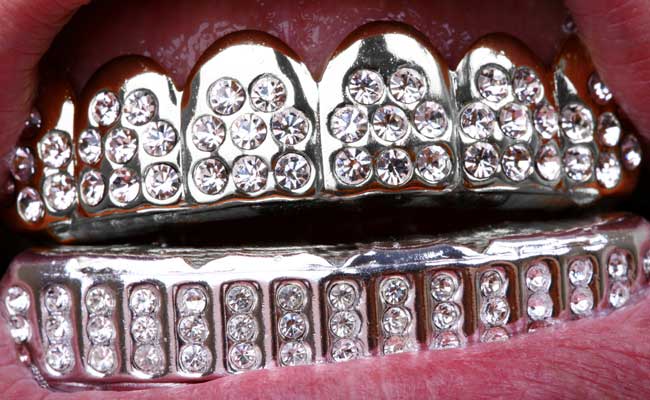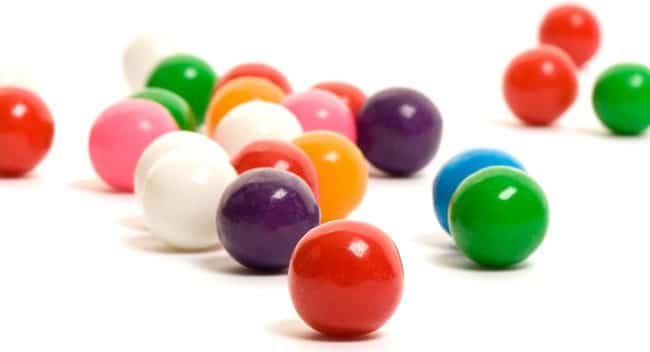What Do I Do About My Wisdom Teeth?

“People grow through experience if they meet life honestly and courageously. This is how character is built.” – Quotation attributed to Eleanor Roosevelt’s wisdom teeth Your mouth evolves throughtout your lifetime. One of the most common dental milestones is the appearance of your wisdom teeth. Your Wisdom teeth are your third molars and usually come in between the ages of 17 and 21. Historically, these teeth have been called wisdom teeth because they come through at a more mature age. In fact, wisdom teeth, which earned their name because they emerge at the onset of adulthood, aren’t all that wise. (Most people believe Eleanor Roosevelt came up with that statement on her own, but it’s no coincidence that it occurred after her wisdom teeth came in!) When they come through correctly, healthy wisdom teeth are simply additional teeth that can help you chew. Scientists believe that wisdom teeth helped our ancestors with a diet that was much harder on their teeth than our diet is on ours. However, they only begin to come in when people are around the age of 17 to 21 years of age. Since they emerge so late, after your other teeth are well-established, wisdom teeth often create unnecessary problems in your mouth. The complications that can arise from wisdom teeth often overshadow the risks. What Can Go Wrong? The main issue is that wisdom teeth become impacted. This means that your wisdom teeth cannot fully emerge because your gums, back molars, or a combination of both are blocking them. Impacted wisdom teeth can create swelling and pain in your mouth. Additionally, they can be a difficult to keep clean, making you more likely to get cavities and gum disease. Why Not Wait Until You Know There Is an Issue? There are three good reasons to remove wisdom teeth before they cause problems, aside from the fact that they’re not necessary to help us process tough foods anymore. When your wisdom teeth first emerge, the roots aren’t as established, making them easier to remove. Wisdom teeth roots can grow near nerves, creating complications should you need to remove them later. Recovery time is typically longer if you wait to get your wisdom teeth removed, with possible additional symptoms including excessive bleeding, numbness, and reduced jaw movement. What Should I Do? There is some debate if one should get their wisdom teeth taken out as soon as they come in. People with impacted wisdom teeth or other related complications should follow the advice of their dentist and take the proper action. However, for many people, wisdom teeth can emerge with few or no complications. If this is the case for you, dental hygiene will become even more important to avoid cavities and gum disease. You will also want to stay consistent with your x-rays and professional cleaning visits to ensure your wisdom teeth stay healthy and clean. Even if your wisdom teeth initially come in healthy, there’s no guarantee they won’t cause complications in the future. They could cause problems later in your life, which is a reason to just go ahead and have your wisdom teeth removed. Whatever you choose, your dentist will be able to track your wisdom teeth as and after they emerge. If you have questions about your wisdom teeth, please call or make an appointment with us today!
Oral Care in the Wilderness – Leave No Tooth Behind

Have you ever watched shows like Lost or movies like Cast Away and wonder how the teeth of these people must feel like after an extended stay on a remote island? Fortunately, there are a few things they (or you, if you go camping or get stranded) can do to help maintain a healthy smile when you don’t have access to a dentist or minty toothpaste. When you don’t have a toothbrush and floss, the concept of oral hygiene remains the same. Keep food debris from sticking around inside your mouth, and agitate the bacteria so plaque and tartar don’t develop. In a bind, you can use a clean cloth or part of your t-shirt. Put the cloth on your finger and rub your teeth and gums as you would with a toothbrush. This method is good for minor stays in the wilderness, but won’t provide optimal care in the long run. Use What’s Around You In the unfortunate situation you are without proper care for an indeterminate amount of time, you can find or adapt natural tools from your surroundings to clean your teeth. Chewing stick. Find a tree that has fibrous branches. Break off a toothbrush sized twig. Chew on one end to fray that part of the twig, which can now be used in lieu of an actual toothbrush. As strange as this may sound, a lot of cultures around the world still use chewing sticks for their dental hygiene. Due to the chemical composition of some trees (apple, fig, bamboo, and many more), they can help protect your teeth when chewed on. Small bones. If you are hunting for food, save some of the smaller bones. They can be used as toothpicks, removing food debris from between your teeth. Hair. This may seem gross, but if you didn’t bat an eye at small bones, you may as well try this trick too. If you have hair is long enough, you can use it as a substitute for floss. Water. Rinse with water (sterilized, if possible) to keep your mouth clean after brushing. Avoid problem foods. Without access to proper dental care, it’s best to avoid foods that can damage your teeth. Try not to eat fruits with a high acidity level, or foods that easily get stuck in your teeth. Now you know how Tom Hanks kept his smile going stuck on an island for three years. (And you thought it was Hollywood make up artists?) While these options may sound less than appealing, they could be the difference between having healthy or damaged teeth while out in the wilderness. That and no one likes the feeling of fuzzy teeth. If you’ve just returned from the wild, or if you’d just like to stay up to date on your dental visits, please don’t hesitate to give us a call!
How do oral piercings affect oral health?

A Healthy Smile Is Your Best Accessory Body piercings have become increasingly prevalent over the past decade, and with more and more celebrities like Victoria Beckham, Tyrese, and Christina Aguilera sporting them, they are only gaining popularity among people of all ages. While piercings offer people the opportunity to express their individuality and add some extra bling to their personal style, some of the most popular piercings are located in the mouth area, which can be problematic. Do oral piercings damage teeth? Oral piercing can hurt your teeth and gums. It’s already easy enough to damage your teeth from day to day activities like chewing ice or trauma from sports. Complicate things with a piece of metal jewelry you just make it more likely to crack an incisor. In addition to an increased chance of injury an oral piercing can irritate your gums. Even without trauma having a stainless steel ball rubbing along your teeth can lead to enamel damage, scratches, and tooth sensitivity. If you’ve had any dental work done—including fillings or crowns—oral piercings can damage these as well, so if you don’t want to spend more money and time in the dental chair having your dental work repaired, we recommend choosing a non-oral piercing—if you’ve really got the urge to pierce something Popular face and mouth piercings include those in the tongue, lip, and cheek areas. The following are just some of the health risks and side effects associated with these piercings. Infection: Your mouth is home to a large number of bacteria that breed in moist environments. This is the perfect environment for an infection to occur. When an infection occurs in your mouth, it can become life threatening if not treated immediately. Excessive bleeding: On occasion a blood vessel gets punctured during the piercing process and results in prolonged bleeding. If not dealt with properly, severe blood loss can cause complications. Damaged gums and teeth: People with mouth piercings often develop the habit of playing with them, which may include biting and twirling them around the mouth. This can lead to scratched, cracked, and broken teeth and fillings. It can also damage the gum line. Allergic reactions: Sometimes people may unknowingly be hypersensitive to metals and can experience an allergic reaction. Nerve damage: Numbness at the site of the piercing is common. However, in some cases it remains a permanent condition due to nerve damage. Excessive saliva: Heavy salivation can result from wearing jewelry in your mouth. This can cause complications with your ability to chew and swallow correctly. It can also interfere with the pronunciation of words. If you do decide to get a face or mouth piercing, or if your child or adolescent has one, be prepared for four to six weeks of healing time. The following are some tips that will help you maintain your oral health should you decide to keep or get a mouth piercing: Make sure to keep the piercing site clean after you eat. Clear away any food particles by using mouthwash after each meal. Remove all jewelry when participating in sports, and ask the dentist about getting a mouthguard for protection. If you notice that you are developing habits that include biting or clicking your piercing against your teeth, stop immediately or consider removing the jewelry. If you think you may have an infection or might be developing an allergic reaction to the metal in your mouth jewelry, remove it immediately and call your doctor. The ADA advises against getting body modification to the mouth and considers these as invasive procedures with negative health benefits that outweigh the cosmetic effect on a person. How do you protect your teeth with oral piercings? If you already have piercings or decide that you want to get one there are ways to help protect and preserve your oral health. Keep the area clean – Be aware of food debris that can support harmful bacteria and pay extra attention to cleaning around the piercing or modification to prevent infection. Avoid rubbing your jewelry on your teeth – by preventing the metal parts of the jewelry from common in contact with your teeth you can prevent enamel damage. You should also pay attention the jewelry while speaking and eating to prevent accidents. Be extra mindful of oral hygiene – Brush your teeth twice each day, floss, use an oral rinse around the piercing and visit your dentist every six months to ensure that the piercing isn’t causing damage. Choosing to get a facial or oral piercing is an aesthetic decision that impacts your oral and whole health. Your at-home oral hygiene routine will be more important than ever should you choose to get one, as will your routine visits to the dentist and your dental cleanings. Make sure to let our provider know if you have an oral or mouth piercing so that he can help create a dental plan that will protect and maintain your best oral health. To find out more about mouth piercings, your oral health, and how we can help protect your teeth and gums, give your Palmdale dentist a call at 661.202.3542 today.
A Brief History of Grills

A Brief History of “Grills” Grills (or grillz) are, if not popular, at least fairly recognizable these days. Made of precious metals (gold and platinum being the most common) and often studded with diamonds, most grills are removable and worn over the front teeth. But where do they come from? Although many people would point to Nelly and his 2005 song, “Grillz,” as the starting point for the trend, they’re actually much older than that. (And no, we’re not just talking about rappers like Slick Rick, Flavor Flav, and Big Daddy Kane from the 80s and 90s, either). We’re talking ancient history. In ancient Italy, between 800 and 200 BC, wealthy Etruscan women wore teeth woven together with gold wire the thickness of a rubber band. The wire held together teeth that had been removed and were placed back into the mouth, so they made eating difficult. The practice wasn’t necessarily common, but archaeologists found documentation of around 20 sets of teeth woven together in this way. Etruscan civilization vanished as the Romans took over Italy, and this fashion trend died with it. In Latin America, Mayans actually cut small holes into their teeth and filled them with precious stones, typically jade. Again, this was a trend that only royalty and the wealthy could afford. Although the Mayan civilization has disappeared, many people in southeastern Mexico, Belize, Honduras, and Guatemala still wear gold tooth jewelry today. In ancient Filipino myths, the creator of the world, a deity named Melu, had gold teeth—and during what was the Middle Ages in Europe, Filipinos were filing down their teeth and decorating them with gold. Some of these decorations included gold bands that covered the entire front row of teeth; the oldest date to around 1300 AD. As the Renaissance began in Europe, dentistry was becoming more scientific and less superstitious—and Giovanni de Arcoli, a 15th century Italian professor of medicine, became the first author known to recommend filling cavities with gold to preserve them. Grills started appearing in rap and hip hop videos in the 80s, and became even more popular as Southern rap began to take off in the 90s and early 2000s. And now, they’ve jumped into mainstream culture, as celebrities like Madonna, Miley Cyrus, Katy Perry, and even Ryan Lochte have sported them in recent years. You might expect a dentist to come out against grillz as a health hazard, but no studies have proven that they’re bad for your teeth. As long as they’re removed and the teeth are brushed and flossed as appropriate, they shouldn’t cause health problems. Some metals can cause irritation; if it causes a rash, or bleeding, or other problems, just stop. Similarly, don’t clean them with anything toxic to ingest (like most jewelry cleaners), and don’t try to attach them permanently to your teeth with glue. But if you want to wear a grill, and you use some common sense and take care of your teeth, you’ll be part of a long tradition of dental jewelry. We can’t recommend a jeweler to create your grill, but if you have any questions about dental instruments—either ornamental or for health reasons—please give us a call at 661.202.3542 and we’ll be happy to answer your questions.
Four Foods That Can Damage Your Teeth

Last month, we looked at foods and drinks that can stain your teeth, but whiteness isn’t the only measure of healthy teeth. There are lots of foods that can chip your teeth or damage dental work in your mouth when you eat them. What are some of these problem foods? Your [LOCATION] dentist can warn you about some of the biggest culprits when it comes to chipped teeth, loose fillings, and broken crowns. Ice On a hot summer day, it’s great to fill a tall glass with ice and pour in some soda, lemonade, or tea to help cool down. You’re right if you assume that sugary drinks are bad for your teeth (they are!), but they’re bad in an over-the-long-term kind of way. In fact, lemonade and soda are also quite acidic, which isn’t good for your tooth enamel, either. However, it’s the ice that can actually chip your teeth if you chew it. Other hard foods can damage your teeth, too, so be careful when you’re eating things like baguettes, hard pretzels, and biscotti. Popcorn Lots of people enjoy buttered popcorn while sitting in a cool, air-conditioned movie theater, but unpopped kernels can definitely ruin the fun. They’re hard enough to chip a tooth if you crunch down on one of them by accident or on purpose. However, popcorn actually poses a double threat. The thin shell that covers the kernel can actually get stuck between your teeth or between your tooth and gum, giving bacteria a source of food and promoting tooth decay. Fruits with pits What do olives, cherries, dates, and peaches all have in common? They all have pits, of course, and those pits can damage teeth. If you accidentally bite into a pit, you can definitely crack or loosen a crown—or damage regular tooth enamel. Candy Pretty much every type of candy can damage your teeth. Hard candies can chip teeth if you bite on them or chew them up; if you suck on them and let them dissolve slowly, you’re basically giving your teeth (and the bacteria in your mouth) a sugar bath. Chewy candies, like caramels or taffy, can stick to your teeth, increasing the risk of cavities, or stick to fillings and crowns, loosening them. But sour candies are probably the most damaging of all because they combine three dangers to your teeth all in one. They’re loaded with sugar and they stick to your teeth, but the sour flavor actually comes from acids, which eat away at tooth enamel. You’re probably noticing a theme by now. Hard foods can damage your teeth. We’re not trying to you away from enjoying the sorts of treats you love. However, if you’re eating something that could chip your teeth, pay attention while you’re eating it. If you’re eating something that could damage your teeth in another way, remember to drink some water to rinse out sugars and acids. And always brush your teeth and floss after you’ve eaten any of the foods on this list. If you’ve damaged a tooth or lost a filling because of something you ate, give your Palmdale dentist a call at 661.202.3542 to make an emergency appointment. Come on in, and we can get your damaged tooth fixed right away!
